Playing musical instruments helps you relax, take a break from the daily routine, engage in creativity, selecting and processing your favorite tunes to your taste. A synthesizer is just what suits this perfectly. Compact and lightweight, it does not take up much space in the apartment, and will sound like a piano or guitar. Its appearance will beautify any interior. It will be useful for children studying at a music school, professional musicians and just creative individuals who want to try themselves as a DJ or arranger. The editorial staff of the site "bestx.htgetrid.com/en/" offers readers a review of "The Best Synthesizers for 2020", based on customer reviews and expert recommendations.
Content
A bit of history
It all started with the invention of the American Elisha Gray. In 1876, he demonstrated his musical telegraph to the public. The device consisted of a two-octave piano keyboard and speaker in a compact wooden case. This product did not receive any practical value, remaining an interesting toy that demonstrates one of the ways to use electricity.
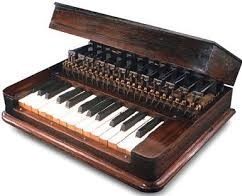
Twenty years later, Thaddeus Cahill, demonstrates to the public his creation - Telharmonium. The unit (you cannot name it otherwise), weighed about two hundred tons. The bulk of them were dynamos, of which there were 145 in the "monster". Despite its cyclopean dimensions, it became the first electromusical polyphonic (polyphonic) synthesizer.
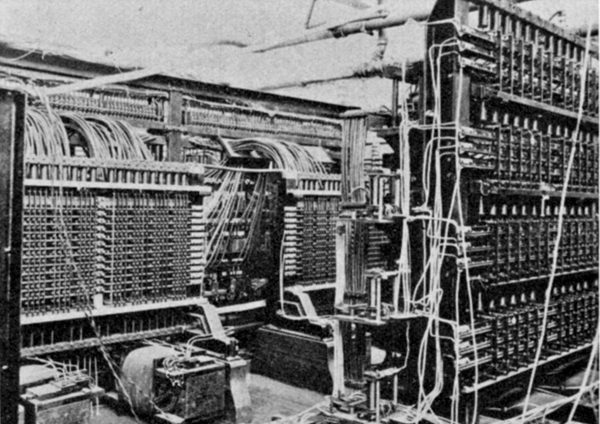
A truly amazing apparatus was created in 1920 in Soviet Russia by Lev Sergeevich Termen. Theremin (as the author called him), generated sounds as a result of the movement of hands in front of special antennas. No strings, no keys! The stunned listeners called it the music of the spheres and ether.
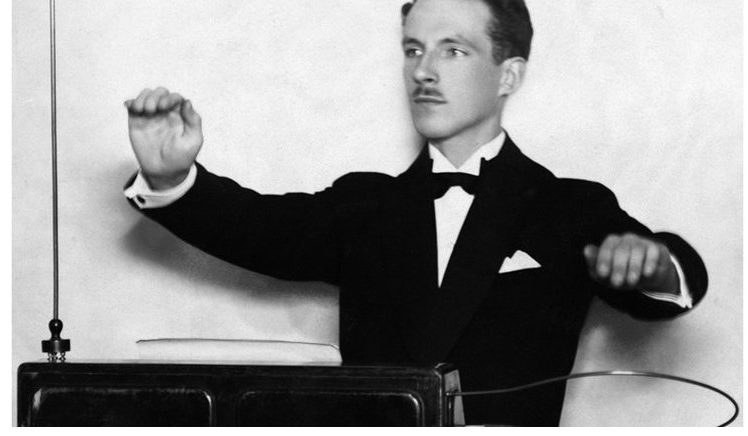
Interesting! One of the first who tried to perform a musical work on the theremin was V.I. Lenin, who played "Skylark" on it by M.I. Glinka.
Theremin is growing in popularity these days. The largest schools for playing on it were created in Russia and Japan. Many professional musicians use it in their recordings.
In 1934 the first electric organ was developed by American Lawrence Hammond. Sounds in it were generated by disks rotating at a certain frequency, opposite which electromagnets were installed. The pitch depended on the rotational speed and the projections of the disks driven by the electric motors. Later, Hammond organs were supplemented with reverberation and chorus effects.
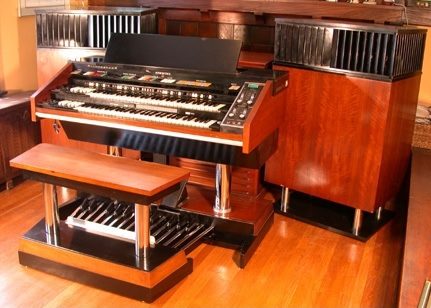
In the forties, synthesized sounds of a grand piano, winds and harpsichord were added to the existing effects. Hammond has been used by professionals in recording studios from the inception of the industry to the present day.

Interesting! The sounds of Hammond are known to fans of rock music from the recordings of Procol Harum and Deep Purple.
What are the electronic musical instruments
There are three types of electronic keyboards: digital piano, synthesizer, and MIDI keyboard. We are not covering the digital accordion here.In terms of its properties and sound, the digital piano is as close as possible to its traditional classical prototype; it necessarily has a built-in speaker system, unlike a synthesizer, which may not have it. MIDI keyboard is a truncated version, definitely without its own acoustics. It must be connected to a computer, and some of the functions and settings are available only through a special application that must be installed on the computer.
Synthesizer device
In a very simplified form, the synthesizer operation scheme is the formation of electrical signals by closing contacts when keys are pressed. The received signals, after processing on microcircuits or in a microprocessor, are converted into sound waves, the height and tone of which change depending on the magnitude of the voltage.
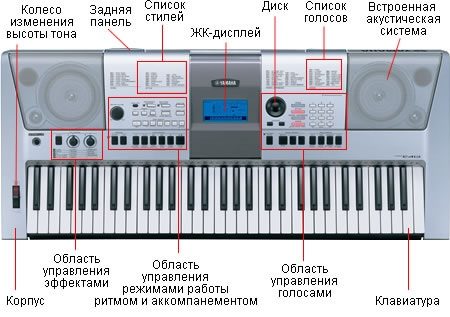
In the first commercial synthesizers, sounds were reproduced by means of generators. Electronic, "synthetic" music was seriously different from the usual to our ear played on acoustic instruments. However, for the stage it was new and the appearance of electronic music was welcomed by everyone.

Synthesizers, which sound little different from real musical instruments, are called samplers. In the 70s, they were expensive and most often found in recording studios. The development of digital technologies has made them available to a wide range of professionals and amateurs. With their appearance, musicians were able, using the piano keyboard, to extract the sounds of a grand piano, guitar, wind instruments and even drums, as soon as they pressed the desired button.

Interesting! A sample is a digital recording of the sound of real musical instruments in the memory of a special device - a sampler.
It is used as a stand-alone device and as part of a synthesizer, where it is called a brain in professional jargon.
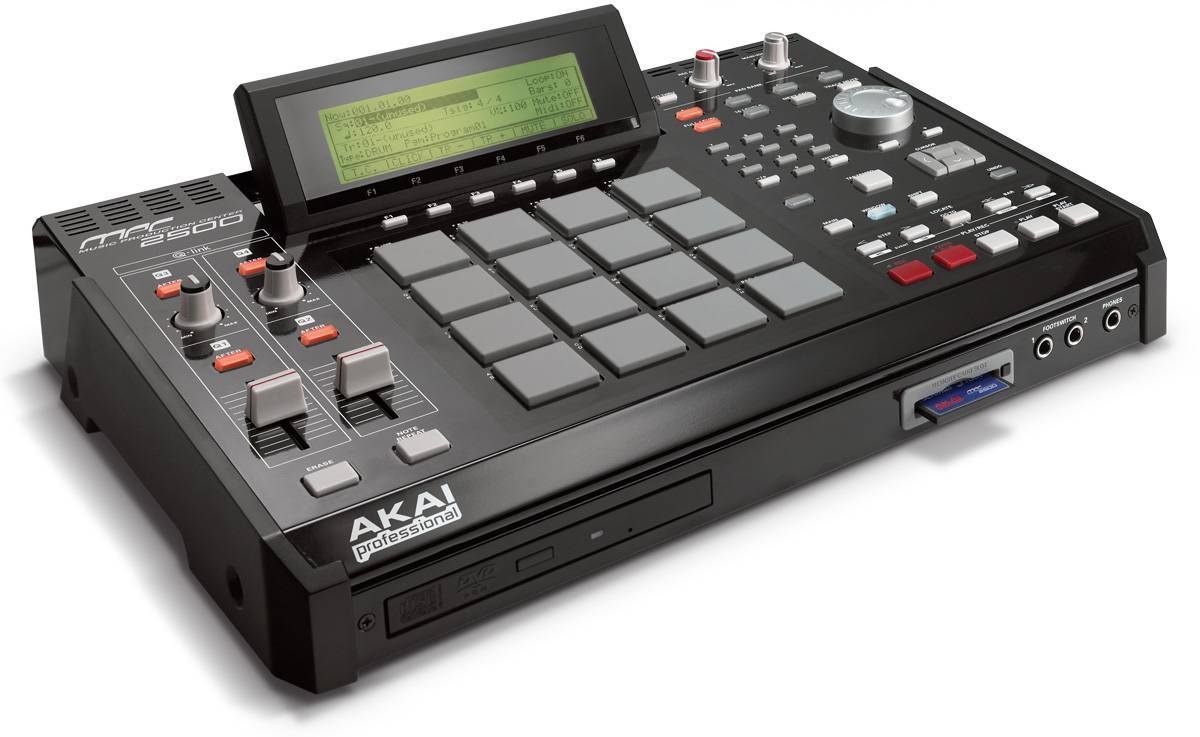
These days, the range of synthesizers is quite wide, and users purchase it for various purposes:
- as a musical toy;
- students of music schools in piano for home lessons;
- for home music making;
- professionals, for concert activities;
- equipment for a recording studio.
Depending on the purpose, different requirements are imposed on the tool. Before purchasing it, it is important to determine what it is for. It depends on what its characteristics will be important in your case.
Criterias of choice
Keyboard
The keys can be full-sized, the same size as the keys on a piano or grand piano. There are models with smaller keys. As a rule, these are "children's" models. You need to choose a tool with full-size keys. The child is growing, he is interested in making music, he will have to buy a more advanced version. The transition from small to full-sized keys is not easy. Piano learners even more need to get used to normal keys from the very beginning.
A piano or grand piano has only 88 keys or seven octaves, the first, second, third, fourth, plus the major and minor octaves, the counter octave and the three leftmost keys, which are called the subcontoctave.

Full-size keyboards (88 keys) are equipped with digital pianos. In synthesizers, keyboards are often reduced: six and five and four octaves.

In order to play complex pieces with two hands, you need to select at least a five-octave keyboard (61 keys). On four or two octaves, you can play solo parts of any instruments, but you can't play two hands anymore.

To perform complex classics, you will need a full-size keyboard.
Keyboard mechanics
In terms of hardness, synthesizer, piano and hammer keys are distinguished. The first would be more appropriate to define an electric button with a spring. Simple and cheap, they are not suitable for professional music making. To convey the mood and character of a piece in musical recordings, instructions are used (they are called strokes): Forte (loudly), Piano (quietly), Legato (smoothly) or Staccato (abruptly), etc.The execution of the strokes depends on the speed and strength, touching a key or string, and such sensitivity is not available for "buttons".

The mechanics of piano keys are more complex. They feel almost the same when pressed as they would on a real piano. Depending on the class and purpose of the instrument, piano keys can be closer in response to synthesizer or piano keys.
The hammer mechanism is as close as possible to the mechanism of an acoustic piano, adjusted for the use of electronics instead of strings. They have the correct aftertouch and feel closest to real instruments. Digital pianos and some professional synthesizers are equipped with hammer action.
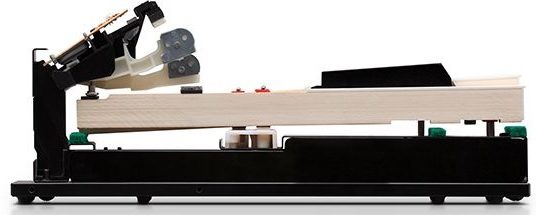
Those who are learning to play the piano need to choose an apparatus with a piano or hammer action keyboard.
Key stiffness
According to this parameter, the keys are distinguished:
- unweighted;
- semi-weighted;
- weighted.
The former have almost no resistance to pressing and are not found in professional models. The latter are tougher. It is easier for the musician to control the effort of the fingers when touching. This option is often found in amateur and some professional models. Weighted in terms of rigidity are not inferior to digital pianos, are used in expensive professional devices.
Timbres
Each timbre (aka sample) corresponds to the sound of a certain musical instrument. It is clear that the more timbres, the better. Budget options can have a hundred or two recorded tones in stock. In more advanced versions, there are several hundred of them, in professional ones - up to a thousand.
Auto Accompaniment Styles
This feature is found on any synthesizer model. At the push of a button, automatic accompaniment starts, and the musician can play solo with just one finger. Pros prefer to do without her. For beginner musicians, even with minimal playing skills, it will not be difficult to build their own improvisation using a ready-made "background". And the more auto accompaniment styles, the more creative possibilities.
Polyphony information
A very important parameter that indicates the number of sounds played simultaneously. In inexpensive models intended for children, the polyphony can be 16 sounds. But you should buy a model with polyphony, at least 32 sounds. This does not mean that you have to play such chords. It's just that the sounds, after the key is released, do not immediately subside. When performing tempo and technically complex pieces, the device with low polyphony will simply "choke". To take full advantage of the synthesizer's capabilities. You will need a version with a polyphony of 72 to 128 sounds.
What is an arpeggiator for?
Function for the "lazy". By pressing one key of a button, you can extract a certain sequence of sounds, something like busting. The key of this arpeggio will change depending on the tone of the pressed key. By enabling this function in parallel with auto accompaniment, the musician gets more opportunities to diversify the general background of his improvisation.

What else to pay attention to
When purchasing an instrument, check if it has analog and digital connectors. A line-out and a microphone jack make it possible to fantasize with external sounds by passing them through a synthesizer, applying certain effects to them, which is especially important for DJs and soloists. By connecting headphones, you can play music for your own pleasure, without disturbing others.

The presence of MIDI and USB allows you to use a computer in your work and significantly expand the possibilities for creating more complex and interesting compositions, recording your tracks and processing them.
Learning functions will not be superfluous for children and will help adults who first touch the piano keyboard. As a rule, this is a metronome that beats the beat so that a beginner musician does not lose his rhythm, and key illumination.Having turned on the learning mode, you will see the notes of the piece being played on the display, At the same time, the key that you need to press will be highlighted and will go out only after you press it correctly. Thus, learning the keyboard and mastering the playing skills will go faster.
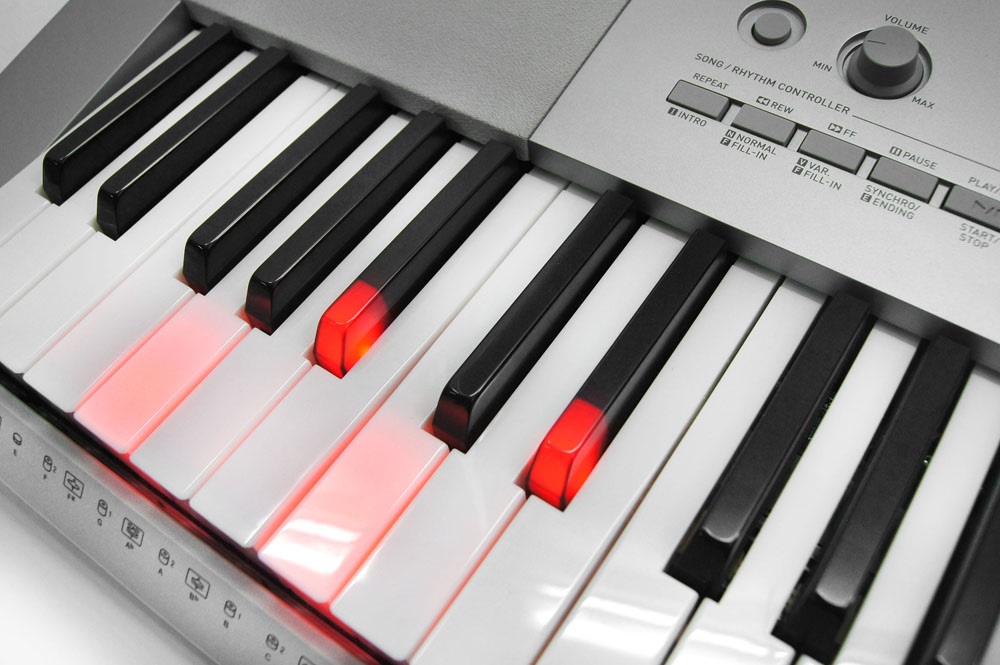
Pedals
In an acoustic piano, pedals are used to control the sound: ducking, smoothing, abrupt sound. There are three of them in an acoustic grand piano. Synthesizers can have built-in and plug-in pedals, and the first can be three, as in a grand piano:
- the extreme right - damper, is intended to muffle the sound;
- middle - sostenuto, prolongs the sound after the key is released;
- the far left - una corda, makes the sound softer and quieter.
You can connect five pedals to the device, loading them with various tasks at your discretion. Some models are equipped with optional pedals. Most musicians use one control pedal - sustain, which gives the performance some smoothness. The pedals are essentially a sound controller.
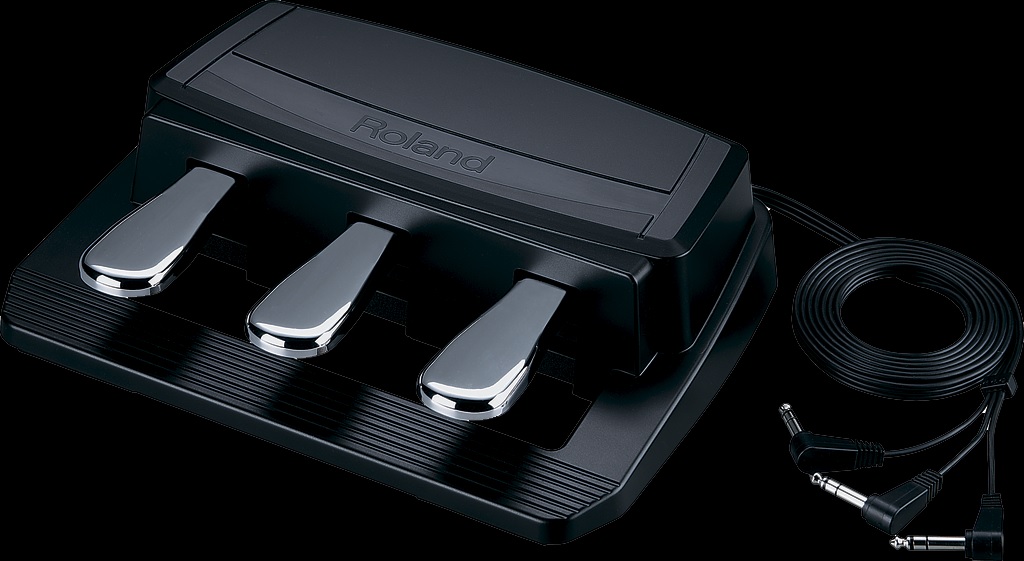
Which company is the best equipment to buy
You should purchase a synthesizer for home or for concert activities from well-known manufacturers. The popularity of their models is due to the high build quality, sound and a wide range of functions and effects. Top manufacturers:
- Yamaha. The products of the Japanese concern are known all over the world and do not need additional advertising. Her popular designs are appreciated by amateurs and professionals all over the world.
- Casio. Japanese manufacturer of electronic equipment. No less famous than Yamaha.
- Roland. Another Japanese manufacturer of electric musical instruments and software for them. The company was founded in 1972, but the quality of products is not inferior to the two previous brands, and in some ways even surpasses them.
- Mideli. A young company from Hong Kong. Her specialization is high quality digital musical instruments. The company's products are highly appreciated by professionals and amateurs.
- Korg. A Japanese company that has been presenting its products in this market since 1962. For some time, the controlling stake in the company belonged to the Yamaha corporation, but was later bought out by the founders. Specializes in the production of electronic keyboards.
For beginners and amateurs, this list is enough. Professionals do not need tips. Before you buy a synthesizer, decide what you need it for. Based on this, select a model with a specific set of functions and characteristics. Find out how much a suitable device costs. Hear tips and tricks from musicians and power users. And be sure to study the description and instructions. Learn how to play and how to tune your device so that you do not experience any difficulties later.
Rating of quality synthesizers
Our review is opened by inexpensive models with limited functionality, sufficient for the first experiments in musical creativity.
10. Tesler KB-6190
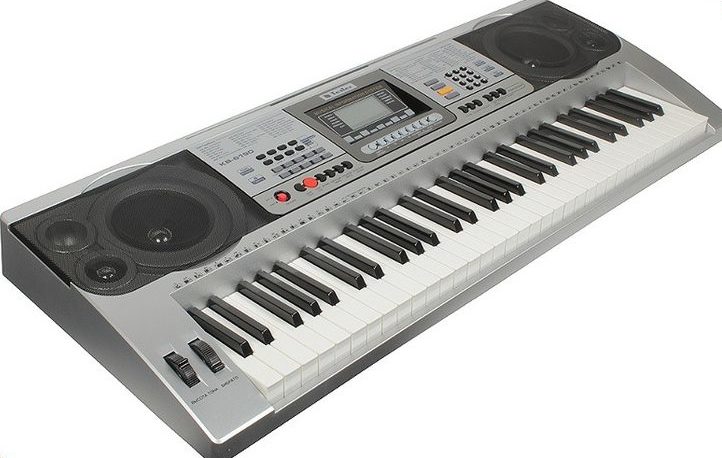
Compact and inexpensive, it is perfectly suitable for children and beginners. The model is equipped with its own acoustic system, display, with a learning function of three melodies. Differs in a rather detailed set of effects for beginner musicians and arrangers:
- a set of 200 tones;
- 16-sounding polyphony;
- auto accompaniment from 128 styles;
- three educational melodies;
A five-octave keyboard with full-size keys allows for two-handed play. With the Tesler KB-6190, you can not only learn to master the instrument, but also compose and record your own tunes.
Advantages:
- affordable price;
- good functionality;
- small dimensions;
- the possibility of training;
- headphone and microphone jacks;
- availability of USB port.
Disadvantages:
- poor polyphony;
- there are no pedals and the ability to connect them.
| Specifications | Model Tesler KB-6190 | average price |
|---|---|---|
| Tool type | Synthesizer | 7645 rubles |
| Keyboard features | Unweighted, 61 full-size keys, no hammer action. | |
| Design features | The model is compact in size and equipped with built-in acoustics. Informative display. | |
| Dimensions, mm | 971x 379x140 | |
| Tool weight | 4.77 kg | |
| Functional | 200 tones, 16 sounds of polyphony, auto accompaniment for 128 styles, transposition. Song recording capability, three training melodies. | |
| Optional equipment | There is a headphone jack, USB, one mic and one line-in. The pitch and modulation are controlled by the controllers. |
9. Casio STK-1500
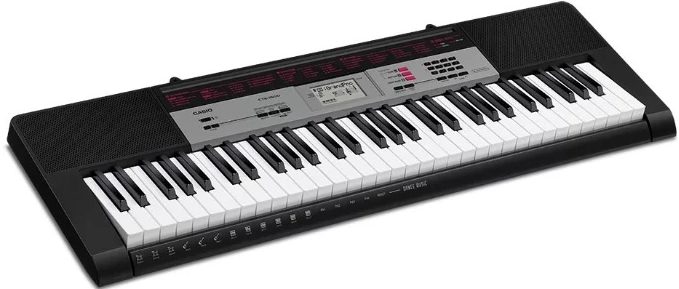
The ninth place in our rating is taken by the product of one of the largest manufacturers of consumer electronics, the Japanese corporation Casio, model STK-1500. The device has functionality similar to the previous model. Polyphony for 32 sounds is twice the same parameter of Tesler KB-6190, bringing its characteristics closer to semi-professional. In terms of the number of timbres and styles of auto accompaniment, Casio is almost twice as low as Tesler. In general, Casio STK-1500 gives a child an idea of how real acoustic instruments sound, "pulls" him into the world of music, makes him feel like a creator, rock musician, DJ. Compactness, light weight and the ability to be powered from batteries, allow you to take it with you to the country and to nature. Not a bad choice for a child.
Advantages:
- full-size keys;
- five octaves;
- compactness and light weight;
- power supply from mains and batteries;
- quite extensive functionality;
- affordable price.
Disadvantages:
- lack of pedals;
- lack of USB connection;
- a small stock of voices and auto accompaniment styles.
| Specifications | Casio model STK-1500 | average price |
|---|---|---|
| Tool type | Synthesizer | 7249 rubles |
| Keyboard features | Unweighted, 61 full-size keys, no hammer action. Insensitive to touch. | |
| Design features | The model is compact in size, has built-in acoustics with a 2x2 W amplifier, an informative display. | |
| Dimensions, mm | Length 946, width 307, height 92 | |
| Tool weight | 3.3 kg | |
| Functional | 120 tones, 32 polyphonic sounds, 70 styles of auto accompaniment, transposition. | |
| Optional equipment | There is a headphone jack, battery powered. USB connectors are missing |
8. Yamaha PSR-F51

Another representative of the land of the rising sun, the PSR-F51 from Yamaha. Products from this manufacturer are famous for their excellent sound. The performance of the piano parts on it is almost indistinguishable from a real acoustic instrument. A five-octave keyboard with full-size keys, perfect for music school students to use at home. Connecting headphones, battery power (except for network) and the presence of a metronome, expand the possibilities of playing music even in the "field" conditions, without causing inconvenience to others. Arpeggiator, transpose, reverb, 32-sound polyphony, a variety of voices and auto accompaniment styles let kids and beginners get creative.
Advantages:
- wide functionality;
- compactness and light weight;
- battery powered;
- affordable price.
Disadvantages:
- lack of USB port;
- lack of pedals.
| Specifications | Model Yamaha PSR-F51 | Average price |
|---|---|---|
| Keyboard features | Unweighted, 61 full-size keys, no hammer action. Insensitive to touch. | 8290 rubles |
| Design features | The model is compact in size, equipped with built-in acoustics with an amplifier 2x2.5 W, an informative display. | |
| Dimensions, mm | 940x 306x109 | |
| Tool weight | 3.4 kg | |
| Functional | 120 tones, 32 polyphonic sounds, 114 style auto accompaniment, transposition. There are arpeggiator, metronome and reverb functions. | |
| Optional equipment | There is a headphone jack, battery powered. USB connectors are missing | |
7. Roland A-49

The seventh place in the ranking is occupied by the model A-49, the Japanese company Roland, one of the world leaders in the development and production of electric musical instruments, synthesizers and software for them. Despite the affordable price, the device has quite impressive functionality.Perfect for both training and professionals involved in arranging their own tracks. The sound quality is excellent. The unweighted full-size keys leave the feel of real piano playing. Optical Sound Control eliminates the need for pedals, replacing them with palm movements. The device does not have its own speaker system, it can work through separate speakers, connect to a tablet and a computer.
Advantages:
- high-quality keyboard with perfect unweighted mechanics;
- extended functionality;
- low power consumption;
- excellent management;
- affordable price.
Disadvantages:
- a small keyboard of four octaves will not allow playing with two hands;
- lack of your own stereo system.
| Specifications | Roland A-49 model | average price |
|---|---|---|
| Tool type | Midi keyboard | 11332 rubles |
| Keyboard features | Unweighted, with 49 full-size keys, no hammer action with touch-sensitive sensitivity. | |
| Design features | The model with plug-in pedals, modulation and pitch controllers, has a compact size, does not have its own acoustics, an informative display. | |
| Dimensions, mm; product weight kg. | 836x182x84; 2.5 kg. | |
| Additional Information | The keyboard is equipped with a Mini (output) connector, USB |
6. Medeli M17
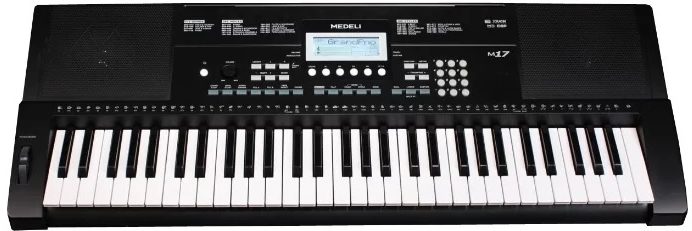
In sixth place is the product of the Hong Kong company Medeli, model M17. The device is equipped with a highly advanced digital signal processor. Differs in good sound. The five octave keyboard allows you to play with two hands. It has an impressive set of functions and capabilities, including split keyboard, powerful 64-sound polyphony, rich selection of voices and styles of auto accompaniment, double sound effect. All this at an affordable price.
Advantages:
- high-quality five-octave keyboard with excellent mechanics;
- the presence of sound controllers;
- the ability to connect pedals;
- rich set of voices and accompaniment styles.
Disadvantages:
- small keyboard size.
| Specifications | Model Medeli M17 | average price |
|---|---|---|
| Tool type | Synthesizer | 10700 rubles |
| Keyboard features | 61 full-size keys, no hammer action. Touch sensitive, split keyboard | |
| Design features | The model is compact in size, has built-in acoustics with an amplifier, an informative display. | |
| Dimensions, mm | 955х360х145 | |
| Tool weight | 4.5 kg | |
| Functional | 390 tones, 64 polyphonic sounds, 100 style auto accompaniment, transposition. | |
| Optional equipment | There is a connection for pedals, USB. The pitch changes with the controller. |
5. Yamaha PSR-E463

The fifth in the ranking is another product from Yamaha, the PSR-E463. Buyers love this unit for its excellent sound quality, abundance of timbres and styles. The size of the keyboard allows you to play with both hands. Case material - high quality plastic. The device is equipped with many modern technologies, powerful 48-sound polyphony. In addition to high technical performance, the model has a stylish design and will decorate the interior of the apartment.
Advantages:
- great sound;
- the ability to record your tracks;
- saving audio files in WAV format or converting them to MP3;
- high-quality assembly.
Disadvantages:
- not found.
| Specifications | Model Yamaha PSR-E463 | average price |
|---|---|---|
| Keyboard features | Unweighted, 61 full-size keys, no hammer action, touch sensitive, split keyboard. | 23796 rubles |
| Design features | The model is compact in size, equipped with built-in acoustics with an amplifier 2x6 W, an informative display. | |
| Dimensions, mm | 946x 404x139 | |
| Tool weight | 6.6 kg | |
| Functional | 758 tones, 48 polyphony sounds, 235 style auto accompaniment, with metronome, reverb and transpose. 59 effects. Record up to 10 songs. | |
| Optional equipment | There is a headphone jack, battery powered. USB type A and B connectors |
4. Casio CT-X5000
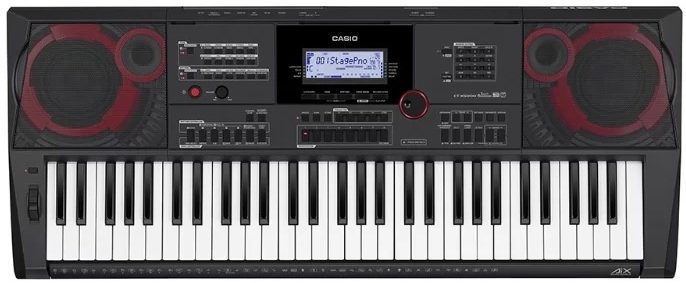
The fourth place is taken by the Casio CT-X5000 model.According to buyers, this model is not inferior in sound quality to products from Yamaha, the piano parts are comparable to the sound of a digital piano. The functionality will appeal to a learning beginner and a professional. The fairly powerful built-in speaker system makes this instrument suitable for home use, studio work and solo performances.
Advantages:
- great sound;
- a large selection of well-recorded Voices and Styles;
- 5-octave keyboard with full-size keys;
- split the keyboard and transpose.
Disadvantages:
- management is complex, you can't figure it out without instructions.
| Specifications | Casio CT-X5000 | average price |
|---|---|---|
| Tool type | Synthesizer | 28,990 rubles |
| Keyboard features | Unweighted, 61 full-size keys, no hammer action. Sensitive to touch. With division. | |
| Design features | The model is compact in size, equipped with built-in acoustics with an amplifier 2x15 W, an informative display. The pitch is controlled by the controller. It is possible to connect pedals. | |
| Dimensions, mm | 940x 306x109 | |
| Tool weight | 7.0 kg | |
| Functional | 800 tones, 64 polyphony sounds, 235 style auto accompaniment, 168 effects, transposition. There is a metronome and reverb function. Record up to 10 songs. | |
| Optional equipment | There is a headphone jack, USB connectors. |
3. Roland FA-06

The three leaders are opened by the Roland FA-06 model. Thanks to the built-in sequencer, the device memorizes played melodies, giving the musician the opportunity to refine and edit them. The vocoder function allows you to achieve amazing effects of "speaking" acoustic instruments in musical sketches.
Advantages:
- lightness and compactness;
- high-quality keyboard for five octaves;
- rich set of functions and effects;
- powerful polyphony;
- the ability to record songs.
Disadvantages:
- no battery power.
| Specifications | Roland FA-06 | average price |
|---|---|---|
| Tool type | Synthesizer | 70,132 rubles |
| Keyboard features | Unweighted, five-octave, without hammer action. Sensitive to touch. | |
| Design features | The model is equipped with its own acoustics, informative display. The pitch of the modulation tones is controlled by the controllers. Pedals can be connected if ordered with damper input. | |
| Dimensions, mm | 1008x 300x101 | |
| Tool weight | 7.7 kg | |
| Functional | 16-part multitimbrality, 128 - sound polyphony with vocoder and reverb, the ability to record songs with up to 16 tracks each. | |
| Optional equipment | There is a headphone jack, USB connectors, MIDI, mic and line inputs. |
2. Yamaha PSR-S650
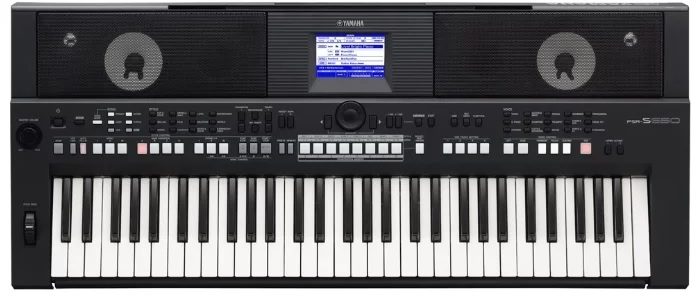
Yamaha PSR-S650 ranks second in the ranking. The traditionally remarkable sound and feature set explains the widespread popularity of this model among professionals. With 865 voices, 181 accompaniment styles and more than three hundred effects, it can satisfy the most discerning arranger. More Styles can be loaded from USB. If desired, you can connect pedals (there are the necessary connectors).
Advantages:
- great sound;
- the ability to update styles and timbres;
- recording your own tracks;
- five octave keyboard.
Disadvantages:
- large gaps between the keys.
| Specifications | Model Yamaha PSR-S650 | average price |
|---|---|---|
| Tool type | Synthesizer | 38190 rubles |
| Keyboard features | Unweighted, 61 full-size keys, no hammer action. Sensitive to touch. With division. | |
| Design features | Model of compact size, equipped with built-in acoustics with amplifier 2x12 W, informative display. The pitch is controlled by the controller. It is possible to connect pedals. | |
| Dimensions, mm | 940x 306x109 | |
| Tool weight | 7.0 kg | |
| Functional | 865 voices, 64 polyphonic sounds, 181 style auto accompaniment, 321 effects, transpose. There is a metronome and reverb function. Record up to 5 songs with sixteen tracks. | |
| Optional equipment | There is a headphone jack, USB connectors. Damper (optional) |
1.Korg Pa 600
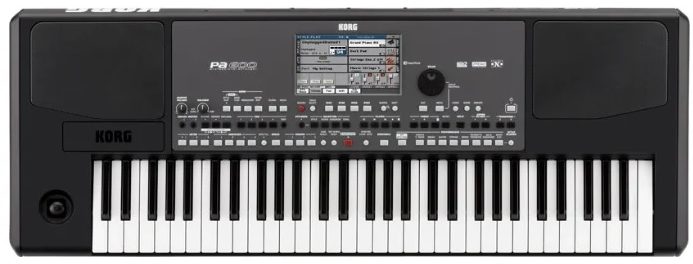
The first place and the best customer reviews go to the product of one of the leading in this industry, the Japanese company Korg, the Pa 600. The device impresses with its capabilities, the number of timbres, styles of auto accompaniment and effects, moreover, it has its own loud speaker system. Users unanimously claim that the sound quality and set of effects, the Korg Pa 600 surpasses similar models from Yamaha and Casio.
Advantages:
- great sound;
- richest functionality;
- ample opportunities for creativity.
Disadvantages:
- not identified.
| Specifications | Model Korg Pa 600 | average price |
|---|---|---|
| Tool type | Synthesizer | 70,000 rubles |
| Keyboard features | 61 full-size touch-sensitive keys Separated. | |
| Design features | Model of compact size, equipped with built-in acoustics with amplifier 2x15 W, informative display. It is possible to connect pedals, options: control pedal and Damper. | |
| Dimensions, mm | 1030x 378x127 | |
| Tool weight | 11.0 kg | |
| Functional | 950 tones, 128 polyphony sounds, auto accompaniment, 125 effects, transposition. There is a metronome and reverb function. Possibility of recording songs, each with sixteen tracks. | |
| Optional equipment | There is a headphone jack, MIDI and USB. |
A good synthesizer is quite capable of replacing a bulky piano in an apartment. Plus, for the price, some models that are quite suitable for teaching children may be more affordable than their acoustic counterparts. Its mobility, compactness and light weight, the ability to operate on batteries, allow you to combine music with travel. Polyphonic polyphony, sets of timbres and styles will impress neither an advanced musician nor a beginner. Do you want to learn how to play the piano, charm listeners with guitar fingering or divine violin sounds, amaze them with your own arrangement of famous popular songs? If so, make a decision and buy the right synthesizer for yourself or your child. Our review will help you not to make mistakes when choosing a decent model.












